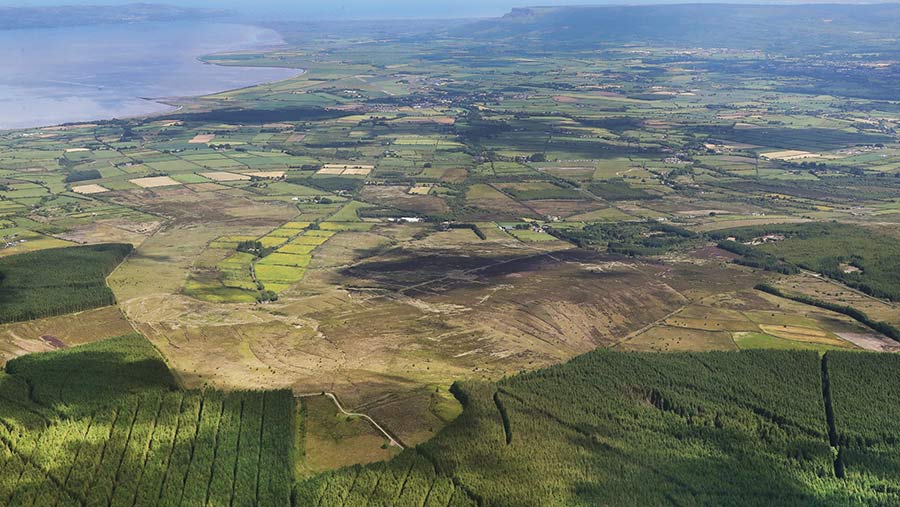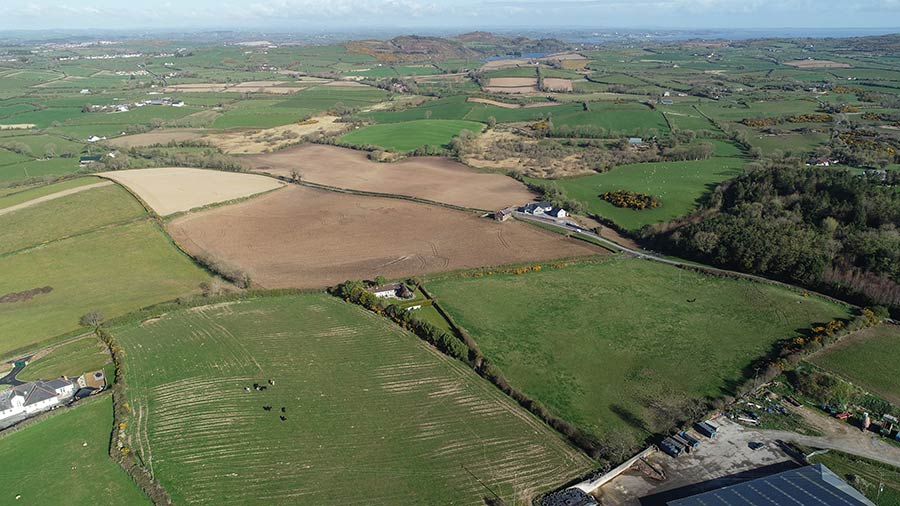Land in your area 2021: Northern Ireland
High demand from farmers looking to expand, investors and environmental and lifestyle buyers has prompted an increase in land values in Northern Ireland.
Market activity strengthened in 2021, following an uncertain 2020, with retirement one of the most common reasons for selling.
James Butler, head of country agency at Savills, believes there is a renewed momentum in the market for farmland in Northern Ireland.
See also: Land in your area 2021: Wales
Mr Butler said: “Non-farming money has dominated the market in Northern Ireland for some time, owing to taxation advantages, a belief that land is a secure asset, a strong farming heritage in the country, and food production.
“However, the reasons for investment are broadening, with a growing emphasis on the positive contribution that land ownership can make to the environment and more lifestyle buyers attracted to country living and the ability to work from home.
“Supply last year increased – arising from sellers who were holding back during Covid-19 – offering buyers greater choice.”
However, the strengthened demand has resulted in competitive interest for all farms offered for sale in the past year, with average prices at just above £10,000/acre. A number of sales generated bids of £20,000/acre due to strong neighbouring interest, according to Mr Butler.
He said: “The expanding range of buyer types is likely to continue to drive land values up in 2022 and while the strong prices may encourage some to trade up by moving to GB, we do not expect to see a surge in supply.”
What sold well?

Carnamuff Road © Savills
Savills sold a 478-acre hill farm as a whole for above its £850,000 guide price to an investor, after a competitive bidding process.
125 Carnamuff Road, Limavady, near Londonderry, includes a three-bedroom house, a range of farm buildings, 35 acres of silage ground, 37 acres of pasture, and 399 acres of hill ground.

Ballyhornan Road © Savills
A 41-acre block of arable and pasture land with a traditional outbuilding near Downpatrick, County Down, was sold by Savills to a farmer for above its £410,000 guide.
Farmland market round-up
This week marks the end of Farmers Weekly’s annual regional analysis of the land market across the UK.
Agricultural land values in England rose by 1% in 2021, according to Strutt & Parker, fuelled by a shortage in the number of farms and estates for sale and the growing range of interested buyers.
Matthew Sudlow, head of estates and farm agency for Strutt & Parker, said the increase in 2021 followed a 3% rise in 2020 and came despite farmers experiencing reductions in their support payments, supply chain disruption and increasing costs.
Here are some key numbers for the 2021 English and Scottish land markets, compared with 2020:
England
- 55,000 acres were marketed in England in 2021 (55,600 acres in 2020) – 25% below the five-year average of 73,100 acres and one of the lowest areas on record.
- In three regions – East of England, North East and West Midlands – supply was more than 40% below the five-year average.
- In general, supply dropped more in southern England (-32%) than in the north (-13%).
- 192 farms and estates were publicly marketed (201 in 2020).
- Only six farms of more than 1,000 acres were publicly marketed.
- The busiest region was South West England, as usual, where 39 farms were launched (47 in 2020).
- The North East launched the lowest number of farms: 12 (also 12 in 2020).
- The top price paid for arable land was £15,800/acre in the East Midlands (£17,500/acre in 2020, also in the East Midlands).
- The most expensive grassland sold was £13,000/acre in the East Midlands (£13,000/acre in 2020, in the South West).
- The average price of arable land was £9,400/acre, up 1% on 2020.
- More than half of arable land made £8,000-£10,000/acre, with 34% selling for £10,000/acre or more.
- The lowest price paid for grassland was £3,000/acre in the West Midlands (£2,750/acre in 2020, in the North East).
- About 60% of purchases were made by farmers – a higher proportion than in recent years and back to the 20-year average.
- 67% of farms marketed sold at or above their guide price – the highest level since 2014, which was a peak in the market.
Scotland
- 27,300 acres were marketed in Scotland – a significant increase of 81% compared with 2020, but still below average.
- 74 farms were publicly marketed (50 in 2020 and a five-year average of 86).
- All regions were busier than in 2020. The busiest regions were the North East and South West, which together accounted for 11,400 acres and 32 farms for sale.
- The majority of farms for sale were lowland livestock units and there were more mixed farms for sale than usual.
- Most of the farms for sale were less than 500 acres (60 out of 74). Only five farms of 1,000 acres or more were marketed but this is back to the five-year average rate after only one farm in 2020.
- Although agricultural buyers dominate, forestry and environmental, social and governance purchasers are growing.
- Grade 1 arable land in East Lothian peaked at £19,500/acre, which is a record for the area, although the average value of arable land was £7,000/acre.
Source: Strutt & Parker Farmland Database. Sales over 100 acres only
